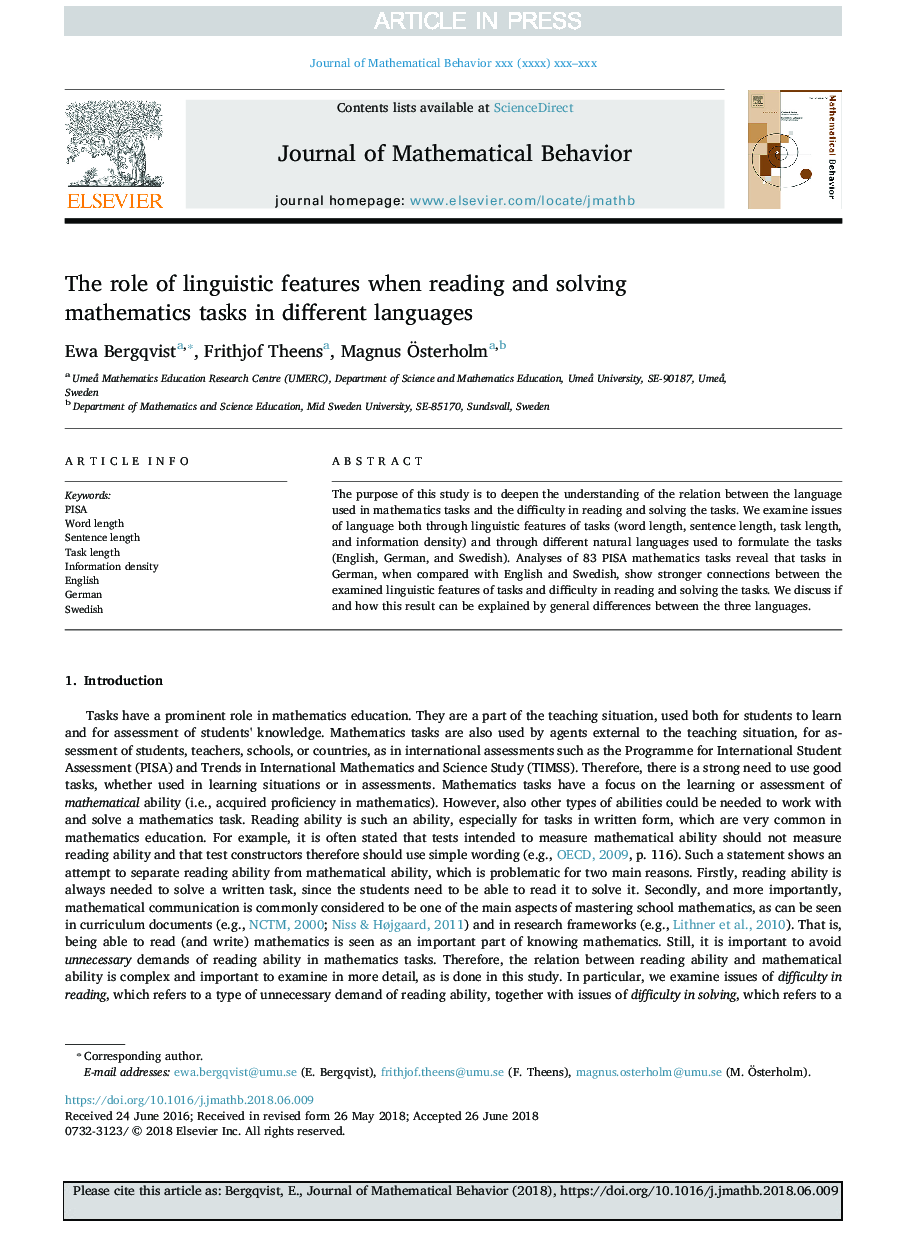| Article ID | Journal | Published Year | Pages | File Type |
|---|---|---|---|---|
| 8947330 | The Journal of Mathematical Behavior | 2018 | 15 Pages |
Abstract
The purpose of this study is to deepen the understanding of the relation between the language used in mathematics tasks and the difficulty in reading and solving the tasks. We examine issues of language both through linguistic features of tasks (word length, sentence length, task length, and information density) and through different natural languages used to formulate the tasks (English, German, and Swedish). Analyses of 83 PISA mathematics tasks reveal that tasks in German, when compared with English and Swedish, show stronger connections between the examined linguistic features of tasks and difficulty in reading and solving the tasks. We discuss if and how this result can be explained by general differences between the three languages.
Related Topics
Physical Sciences and Engineering
Mathematics
Applied Mathematics
Authors
Ewa Bergqvist, Frithjof Theens, Magnus Ãsterholm,
